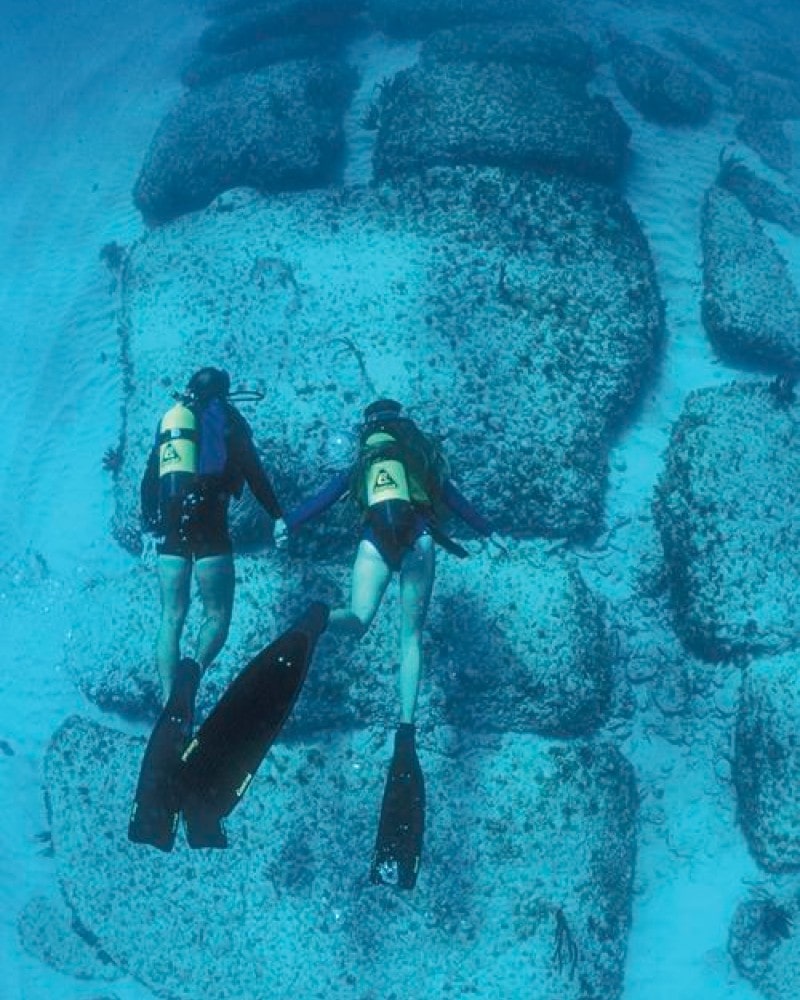
If you set foot at the north Bimini Coast in the Bahamas, you can see a surprising geological structure. Set almost 20 feet below the surface of the water off the coast, the 1500 feet long Bimini Road remarkably looks like an ancient cobbled road.
The Bimini Road
The Bimini Road or Bimini Wall goes parallel to two smaller pathways forming a hook at the end by a neat curving. The road is made of impressively large angular beachrock blocks, each of which measures up to 13 feet in length. Along the seafloor, the block lies in an orderly row. It seems that the natural erosion smoothens the right-angle corners of the blocks.
The Speculation
The Bimini Road was discovered in 1968 by a group of subsea archaeologists, mainly Robert Angove, Jacques Mayol, and Joseph Manson Valentine. The discovery of the sunken road instantly sparked speculation that the ‘pavement’ was a part of the lost civilization Atlantis. Now, this theory has no real base as the concept of mythical Atlantis is entirely fictional. Instead, the truth behind the road’s formation is much more fascinating!
The Authentic Cause

The Bimini Road is made of beachrock that is largely prolific across the coastal area of North Bimini. Beneath the road, there’s a layer of limestone, and together they have been submerged through a natural combination of seafloor-sand erosion and rising Holocene sea levels. While its appearance with uniform blocks gives the impression of being man-made, scientists and archaeologists believe that the beachrock actually started as a larger rock sheet before being broken into the current status of shards.
The Beachrock
The main component of the Bimini Road is the beachrock, a well-cemented and rapidly formed sedimentary rock, made up of a combination of materials. The rocks from the Bimini Road contain small mud pellets or peloids, shell fragments, sand, and benthic foraminifera, the remains of a Cambrian protozoan.
The Reality

The Department of Geology at the University of Miami examined the whole rock samples from the Bimini Road in 1978. They assessed the carbonate cementing the rock core and extracted shell samples from the rock core by using radiocarbon dating. They found the estimated age of the rocks to be nearly 2000 years. This relatively young age provides hard evidence against the Bimini Road’s connection to Atlantis, which supposedly sank 12,000 years ago, making their connection null and void. But that doesn’t mean it isn’t an incredible snorkeling spot!